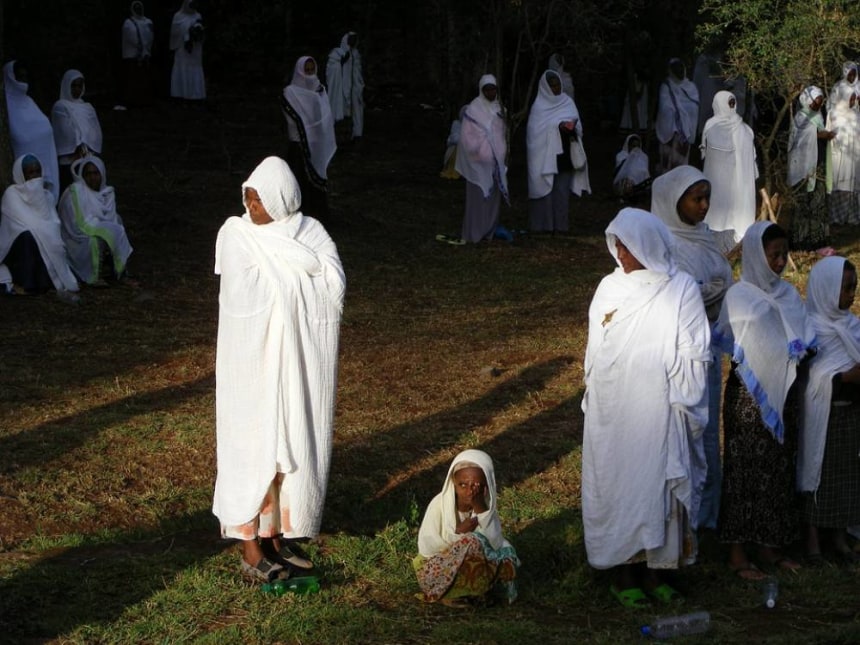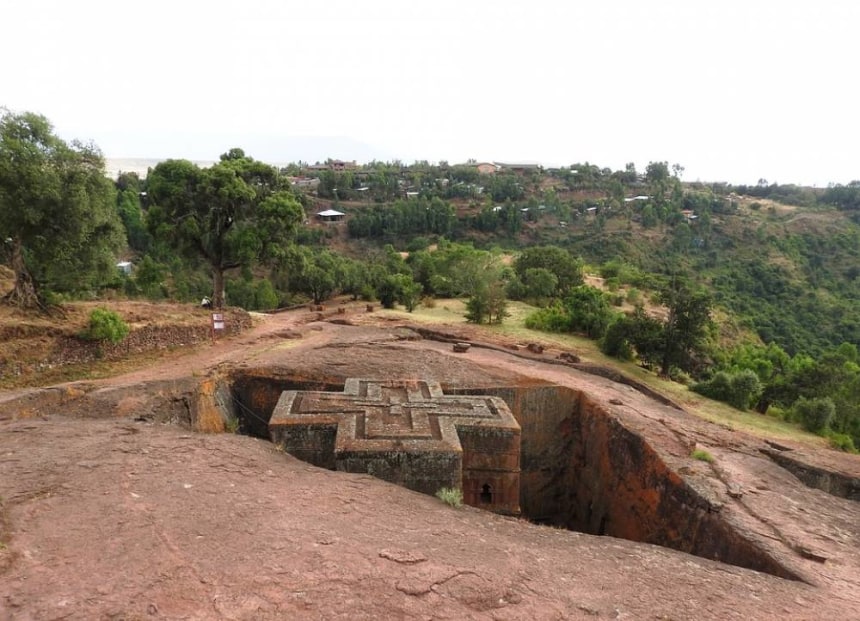
Lalibela, located in the northern part of Ethiopia within the Amhara Regional government state, is situated at an altitude of 2600 meters above sea level and with a population roughly estimated to be 70,000. The town was founded during the pre-Axumite period, some 2500 years ago according to the written document of Ethiopian Orthodox Tewahido Church. But it was officially established as the second capital of Ethiopia during the 10th century by King Merha Tekle Haymanot, after the ruling power was transferred from the fallen Axumite kingdom to then founded Zagwe Dynasty.
The town formerly known as Lasta or Roha got its named changed as a form of appreciation and dedication to Lalibela, after the saintly and famous King Lalibela (Gebre Meskel), who carved out 11 rock-hewn churches from a single mother rock. Once upon a time, back to the end of the 5th century, the famous Axumite King Kaleb traveled to this place and got attracted and impressed to the beauty and peacefulness of the area. The area was covered with the local and indigenous tree called Asta (scientifically named as Hypericum Revoltum). He stood here for a while to his amazement and said "I came all the way here to see a place only to be covered with Asta". As time went by, the local people rephrased his word from "lay'asta" to Lasta, that remained to be its name afterwards. Finally, the king returned back to his hometown of Axum after carving out a rock-hewn church (named as Arba'atu Ensisa) which is still open for visitors and local pilgrims.
In regard to the history of Ethiopia, Lalibela is the second ancient, historical and religious town, still serving as one of the highly recommended pilgrimage site to be visited annually by the Ethiopian Orthodox Tewahido religion followers during the Christmas time.
The town is home to one of the world's wonder (yet officially not having accredited) and Ethiopia's mostly visited tourism asset, which are the 11 rock-hewn churches. These churches were carved out amazingly from a single rock by King Lalibela in the 12th century.
King Lalibela, was one of the 4 saintly kings who reigned Ethiopia under the Zagwe Dynasty. The king spent his earliest times travelling from place to place with a passion of visiting ancient religious sites and learning religious manuscripts, within the country up to Egypt and Israel. After coming back to his country, he started to follow his dream by excavating rock-hewn churches in Adadi (the rock-hewn church of Adadi Mariyam) near to Addis Ababa, at Gishen Amba (the rock-hewn church of Egziyar-Ab) near to Dessie, at Mount Asheton (the rock-hewn church of Asheton Mariyam) in the surrounding of Lalibela, and finally at Roha (the 11 rock-hewn churches grouped in two clusters) in Lalibela town.
Any traveler who has reached the site to visit the churches, will return speechless after witnessing the unimaginable man-made works of the king and his people. It is not only a place of religious worship, but also a site of continuous study and research for architects or structural building scholars.
Near to the town of Lalibela, still there are various rock-hewn churches built before and after King Lalibela, by the other three saintly kings whom have reigned Ethiopia as the Zagwe rulers.



